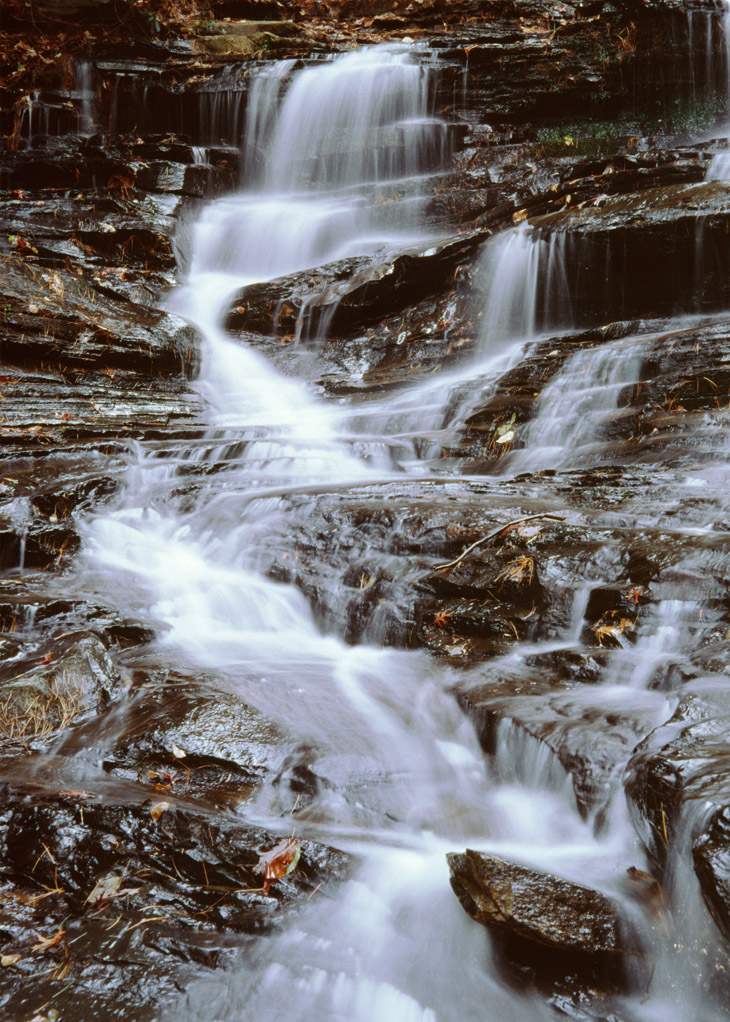
At some point long ago, a friend handed me over a couple of photocopied pages (this was before I had e-mail, or even internet access) with directions to a few waterfalls around Lake Rabun in north Georgia. It was a bit of a drive from where I lived in Raleigh, but I made a couple of trips out there, I believe. At least, I seem to recall two, but I only remember visiting these falls once. This is only a dramatic portion of Minnehaha Falls, one of several that feeds into a lake that resides in a deep narrow valley, very photogenic and pretty easy to get to as waterfalls go; two of the others were a significant hike up the side of the valley, and ridiculously dry when I visited them.
This was 1999, not too long after I switched over to slides at the advice of a professional nature photographer – editors simply didn’t consider negative (print) film at that time. And the increase in quality was undeniable, to say nothing of the longevity, since a lot of my negatives are degrading significantly while most of the slides are pristine.
The trick behind the milky water is easy: all it takes is a longer exposure, perhaps a little less than a second if the water is really flowing, but several seconds will produce the effect no matter what, as long as there’s white water. This of course means a tripod, but also dark enough conditions to let the shutter drag out. The ISO 100 film helped, as did stopping down to f16, but the main contributor was the deeply shadowed conditions where the falls lay. If such things aren’t available, the other trick is to use a circular polarizing filter, which will darken the image some, but the best tool is a set of neutral density filters. If you’re like me, you consider “neutral density” to mean “clear,” but instead it means a darkening filter without a color cast, thus neutral (a lot of things in photography could be named better.) In other words, tinted glass. I didn’t have any at the time, but didn’t need them for these conditions.
Another view can be seen here, a small cascade high up the falls – it’s possible, but tricky footing, and any attempt to scale them should be done with extreme care, as far from the wet portions as possible.
I’m pretty sure I just let the exposure meter of the camera set the shutter speed, after stopping down to f16, but the original slide had a bluish color cast, courtesy of the shade and my lack of foresight in bringing a slight warming filter. Digital has two significant advantages for these kind of photos now, both in giving an immediate preview of how the exposure looks at different shutter speeds, and in changing color cast on the fly. Some day I’ll return, and we’ll see some comparison images…




















































